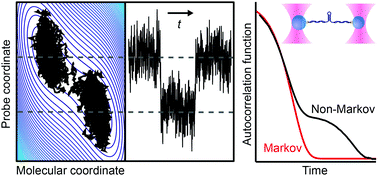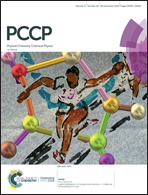Memory effects in single-molecule force spectroscopy measurements of biomolecular folding
Abstract
Folding is generally assumed to be a Markov process, without memory. When the molecular motion is coupled to that of a probe as in single-molecule force spectroscopy (SMFS) experiments, however, theory predicts that the coupling to a second Markov process should induce memory when monitoring a projection of the full multi-dimensional motion onto a reduced coordinate. We developed a method to evaluate the time constant of the induced memory from its effects on the autocorrelation function, which can be readily determined from experimental data. Applying this method to both simulated SMFS measurements and experimental trajectories of DNA hairpin folding measured by optical tweezers as a model system, we validated the prediction that the linker induces memory. For these measurements, the timescale of the induced memory was found to be similar to the time required for the force probe to respond to changes in the molecule, and in the regime where the experimentally observed dynamics were not significantly perturbed by probe-molecule coupling artifacts. Memory effects are thus a general feature of SMFS measurements induced by the mechanical connection between the molecule and force probe that should be considered when interpreting experimental data.



 Please wait while we load your content...
Please wait while we load your content...